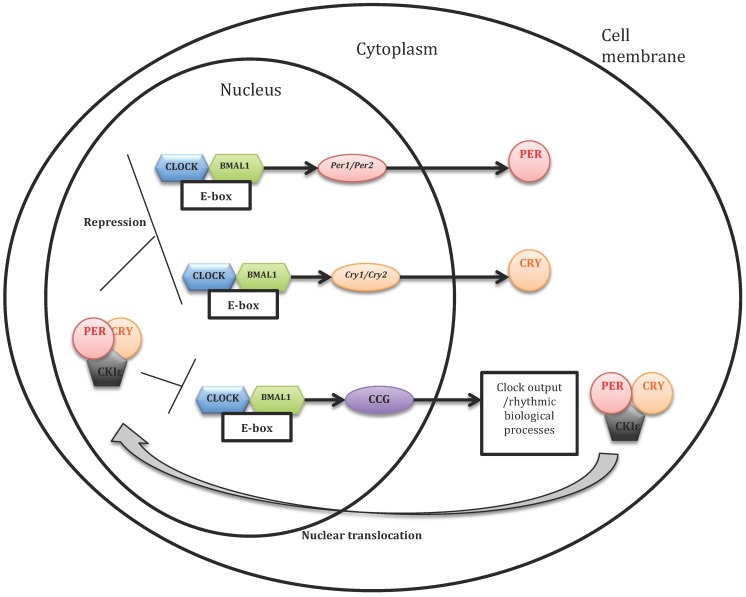Figure 1.
Model of the mammalian cell-autonomous oscillator (based on Lowrey and Takahashi, 2011) [69]. The transcriptional activators circadian locomotor output cycles kaput (CLOCK) and brain and muscle ARNT-like protein 1 (BMAL1) stimulate the expression of cryptochrome-1 (Cry) and period (Per) genes. The protein products of these genes are associated in the cytoplasm to form dimers that go into the core. There, they serve two functions: first, the repression of their own transcription, via the inhibition of CLOCK–BMAL1; and second, the activation of Bmal1 gene, by a mechanism that remains to be discovered. These proteins are thus two regulating loops, one negative and the other positive. CLOCK and BMAL1 activate also the so-called clock-controlled genes (CCG) whose products transmit the rhythm information to the rest of the body via the output channels of the clock. Some proteins modulate the progression of control loops. Thus, casein kinase Iε (CKIε) can phosphorylate PER proteins, which destabilizes them and prevents their translocation into the nucleus.

